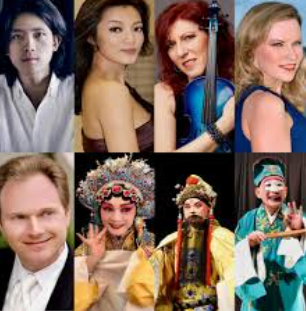The Roots of Eastern Folk Traditions
Eastern folk music is a vibrant tapestry of melodies, rhythms, and storytelling passed down through generations. Rooted in ancient traditions, it reflects the spiritual, cultural, and social identities of communities from the Middle East to East Asia. Over time, these sounds have traveled across borders, influencing classical compositions, modern pop, and even electronic music. This article explores how Eastern folk music has shaped global musical evolution.
I. Defining Eastern Folk Music
Eastern folk music varies widely by region but shares key characteristics:
-
Modal Scales: Unlike Western major/minor scales, Eastern music often uses maqam (Arab/Turkish), raga (Indian), or pentatonic (Chinese) systems.
-
Improvisation: Many traditions prioritize spontaneity, as seen in Turkish taksim or Persian avaz.
-
Storytelling: Lyrics often recount myths, love tales, or historical events (e.g., Mongolian throat-singing epics).
-
Unique Instruments:
-
Oud (Middle East)
-
Sitar (India)
-
Erhu (China)
-
Dombra (Central Asia)
-
II. Historical Crossroads: How Eastern Folk Spread
1. The Silk Road (200 BCE – 1400 CE)
Trade routes carried instruments and melodies:
-
Persian santur inspired the Chinese yangqin.
-
Indian rhythms blended with Indonesian gamelan.
2. Colonialism and Diaspora (18th–20th Century)
-
Romani musicians fused Balkan folk with Indian ragas, creating flamenco’s emotional core.
-
Arabic quarter tones influenced Andalusian music, later shaping Spanish guitar.
III. Eastern Folk’s Impact on Western Genres
1. Classical Music
-
Mozart’s Rondo Alla Turca mimicked Ottoman military bands.
-
Debussy used Javanese gamelan scales in Pagodes.
2. Rock & Psychedelia (1960s–70s)
-
The Beatles incorporated sitar in Norwegian Wood after studying with Ravi Shankar.
-
Led Zeppelin’s Kashmir blended Moroccan rhythms with heavy blues.
3. Electronic & World Fusion (1990s–Present)
-
Dead Can Dance wove Arabic chants into neoclassical darkwave.
-
Bollywood samples appear in hip-hop (e.g., Timbaland’s Indian Flute).
IV. Modern Revival: Eastern Folk in Global Pop
1. K-Pop & J-Pop
-
BTS’s Idol mixes Korean pansori chanting with trap beats.
-
Yoko Kanno’s Ghost in the Shell soundtrack merges Mongolian throat-singing with synthwave.
2. Middle Eastern Electronica
-
Omar Souleyman modernizes Syrian dabke with techno.
-
Nicolas Jaar samples Lebanese fairuz in ambient tracks.
3. Neo-Folk Movements
-
Altin Gün (Turkey) revives Anatolian rock with psychedelic twists.
-
The Hu (Mongolia) fuses throat-singing with metal.
V. Why Eastern Folk Still Matters
-
Cultural Preservation: Artists like Rahim AlHaj (Iraqi oud virtuoso) keep traditions alive in exile.
-
Innovation: Producers like Four Tet sample Bulgarian folk choirs in house music.
-
Spiritual Connection: Sufi qawwali (e.g., Nusrat Fateh Ali Khan) inspires global devotional music.
A Bridge Between Past and Future
Eastern folk music is not a relic—it’s a living force reshaping global soundscapes. As genres blend and technology evolves, its haunting melodies and intricate rhythms continue to captivate, proving that the oldest songs often hold the newest possibilities.
What’s your favorite Eastern folk fusion? From Tuvan throat-singing in The Matrix to Arabic scales in reggaeton, the dialogue between East and West has never been richer.

No Responses